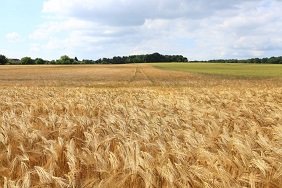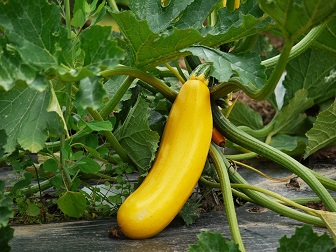There are many problems the human race has to face. Energy, resources, waste, cancer - just to name a few. Scientists are working hard to find new creative approaches to these problems. One of these solutions is to think in very small units. The result lies at the intersection of physics, engineering, chemistry and biology. Nanotechnology has tremendous potential.
Nanotechnology is the idea that we can create devices and machines all the way down to the nanometer scale, which is a billionth of a meter, about half the width of a human DNA molecule.
-Paul McEuen

Other posts in this series:
Nanotechnology #1 - Introduction
Nanotechnology #2 - Nanotechnology In Cancer: An Overview
Nanotechnology #3 - Single Molecule Nanopore Spectrometry
Nanotechnology #4 - Remediation Of Wastesides
There Are Always Two Sides
I know that I have been very one sided in my previous posts in this series. It was not until Remediation Of Wastesides that I even talked about possible negative effects of nanoparticles. Well, this entire post will be dedicated to one big downside of nanotechnology. Please do not understand this as the end to all of nanotechnology. Granted, my blog has certainly not enough power to bring nanotechnology down. Nanotechnology still has huge potential. But I think that it is time to look at an issue that is not getting as much attention due to the wave of enthusiam that nanotechnology has been met with. In this post I am hoping to show you that nanoparticles have phytotoxic (toxicity in plants) effects. Please keep in mind that plant health and human health are not the same thing. While there may be some toxic effects of nanoparticles in plants, they may not have the same effects on humans. I will write a post about nanoparticles and human health later. Alright, enough preface. Let´s get at it.
Nanotechnology And Plants
I have not yet talked about nanotechnology applications in agriculture (this will likely be next week´s post). But I remember an assignment I had to write for my senior seminar class about plagiarism in science. Ironically this has led to my "discovery" of nanotech applications in agriculture, something I have not even yet considered.
Anyways, while doing more research I realized that there is an ongoing debate about whether nanoparticles are harmful or helpful in agriculture.

Nanotechnology has gotten considerable attention from the science community as it has the potential to have a positive impact on many areas of research and life. In agriculture, nanotechnology can help to detect pathogens, protect the plant and to detect pesticide and herbicide residues (Schuster et al, 2012). Possible advantages are that pesticides can be handled in a safer way, with less exposure of the environment to such pesticides (Kumar et al, 2010). Studies have demonstrated possible positive effects of multi-walled carbon nanotubes (MWCNT) on seed germination (Kumar et al, 2010). Increased germination rates are desirable in agriculture as they can increase yield and reduce the time needed to harvest. This does not sound too bad. And that is a statement that you will find when you start researching nanotechnology. Ok, let me go and look at some more critical sources now.
A study done by Ghosh et al. showed that MWCNTs can have adversive effects on allium cepa root cells. These effects include induced cell death, DNA damage and epigenetic changes. It is likely that the DNA damage has triggered apoptosis, which is a mechanism that organisms have to destroy potentially harmful cells before they become a problem (like damaged DNA - cancer). Egigentic changes included changed methylation patterns. Methylation of DNA is a regulatory mechanism for DNA transcription. MWCNTs also affected the membrane and the mitochnondria. This tells us that one particular nanoparticle has negative effects on one type of cells of a particular plant species - this is not too alarming. A similar study conducted by Begum and Fugetsu found that found that graphene can induce cell death in suspensions of Arabidopsis thaliana cells grown in Jouanneau and Péaud-Lenoel medium. The mechanism proposed by this team is that the presence of graphene led to an increase of reactive oxygen species (ROS), which damaged the mitochondria. Stampoulis et al. investigated the effects of different nanoparticles (MWCNTs, Ag, Cu, ZnO, Si) on zucchinis. In their study, Lin and Xing examined five nanoparticles (MXCNTs, aluminum, alumina, zinc, and zinc oxide) and their effects on radish, rape, ryegrass, lettuce, corn, and cucumber. Their results confirm what I have previously read, namely that the toxic effects are dependent on concentration and plant species.

They found that the different nanoparticles had different negative effects on the zucchini plants. For example, copper led to a significantly shorter emerging root, while MWCNTs and silver decreased the biomass of zucchinis by more than half. All of these values are in comparison to untreated blanks. Mondal et al. demonstrated a dosage-dependent phytotoxicity of MWCNTs and oxidizied MWCNTs. Those effects were decrease in biomass as well as germination. Cabbage, tomato, red spinach, and lettuce are all important crops, which were investigated by Begum et al.. This team found that graphene significantly inhibited plant growth and biomass, as well as a concentration-dependent increase in ROS. The overall conclusion of this study was that the phytotoxicity of graphene depended on exposure time, concentration and species (lettuce for example did not seem to be affected by graphene). I think I can wrap up my investigation at this point. Every new study I find basically states the same thing as the previous studies, only that it investigated a different set of plant species. I think I am ready to summarize my findings.
Summary
After reading a few studies it seems that we can conclude that nanoparticles have a phytotoxic effect, which is dependent on the concentration as well as the type of nanoparticle and the plant species. Many of these studies have been done under controlled conditions in the laboratory. Some have used actual plants, whereas some studies relied on cell cultures. So yes, while there are phytotoxic effects, the whole thing is much more complex than it may seem at first.
Nanotechnology is a relatively new area of research. Thus it is not surprising that toxicity and its mechanisms are not well understood. Lin and Xing stated: "(...) available information on the topic is too scarce to reach any consensus on nanotoxicity and its mechanism, particularly for the nanoparticles used in our study". Husen and Siddigi also found that nanoparticles can be functionalized, which significantly lowered their toxicity.

There are many more factors that need to be considered when investigating the toxicity of nanoparticles. For example, as I wrote in last weeks post Remediation Of Wastesides, some nanpaticles like to clump together, decreasing their ability to dissolve in water. Some nanoparticles are easily dissolved in organic solvents. There definitely is a lack of understanding how nanoparticles spread and interact in the environment. If you are interested in this topic, I recomment reading Carbon Nanomaterials in Agriculture: A Critical Review. Another statement that I came across quite a bit during my research was that we have not yet developed tests that are sensitive enough to adequately measure the cytotoxic effects of nanoparticles on plants. This means that investigating only the root growth, germination rate and biomass may not be sufficient to determine phytotoxicity of nanoparticles. The one thing we can conclude for sure is that it needs more research. Another observation I made was that some studies reported positive effects of nanoparticles, at low concentrations. This just adds further to this problem.
Ok, let me try to wrap this up. We know that nanoparticles can have benefits in agriculture. Studies have also shown that nanoparticles can negatively impact plant growth and crop yiel (biomass reduction). Some studies suggest that nanoparticles increase the formation of ROS, which then lead to cell death. Almost all studies stated that we need further research to understand the mechanisms of toxicity of nanoparticles.
We further need more studies that investigate the effect of nanoparticles used in agriculture on human health. While the passage nanoparticles take into plants are not well understood, we do not know anything about implications of nanoparticle use in agriculture on human health. At this point, please remember that this post focused on nanoparticles and phytotoxicty, rather than toxic effects on human health (which I do not know anything about at this point).
All of this may sound daunting. But I would like to remind you of the potential that nanoparticles can have. Personally, I am not sold on nanoparticle use in agriculture. But I still believe nanotechnology will revolutionize material science and several other areas in science. So rather than cursing nanotechnology, it is important to toxicity as a piece of a bigger, much more complex picture. We as humans like to generalize and categorize to make our lives easier and to better understand an ever more complex world. In science generalization can lead to missed opportunities and possibly harmful conclusions. I hope that I was able to show you that there are phytotoxic effects of nanoparticles. Furthermore, I hope that I convinced you that nanotechnology has tremendous upside and that we should not generalize.
Further Reading
Mukherjee et al.: "Carbon Nanomaterials in Agriculture: A Critical Review"
Lin and Xing: "Phytotoxicity of nanoparticles: Inhibition of seed germination and root growth"
Song et al.: "Functional analyses of nanoparticle toxicity: A comparative study of the effects of TiO2 and Ag on tomatoes (Lycopersicon esculentum)"
Dewez et al.: "Silver nanoparticle toxicity effect on growth and cellular viability of the aquatic plant Lemna gibba

Thank you very much for reading today´s post. Leave an upvote if you liked it. If there is anything that you want to add or contribute please do so in the comments. I will write another post in this series next week Monday, so stay tuned. Maybe you like some of my other posts so check out my blog.
While I do put a lot of effort into researching and writing my posts, the day only has so many hours and I have other commitments. There is a reason why I publish on Steemit and not in Nature. Please understand this post as an educated opinion and should be treated as such. After all, my username is @lesshorrible and not "nothingbuttruth".
If you are @sco, and you have done some work with nanoparticles and their toxicity, please share your knowledge.
Again, thank you for reading and upvoting!
As always,
Cheers @lesshorrible!
Interesting one @lesshorrible
Well, these nanoparticles do have toxic effect on plants and us also. Some of the lab in institute are also working on the adverse effect of nanoparticle on plants and what happens most oftenly in lab that we generally dont have the proper disposal of these nanoparticle and just throughing them in the sink wont help, any how it will be absorbed in land and then to plants and several studies have shows their toxicity........So, I would a better safety measurment and training is necessary.
And as you said nanotechnology has lots of hope and scope just need to be handeled carefully. 😊
Downvoting a post can decrease pending rewards and make it less visible. Common reasons:
Submit
Thank you for your comment @vinamra. Yeah, that is something that I have not read too much when I started learning about nanotechnology. It certainly is important and we need more research. Cheers!
Downvoting a post can decrease pending rewards and make it less visible. Common reasons:
Submit
A very well constructed article. Welcome done!
Downvoting a post can decrease pending rewards and make it less visible. Common reasons:
Submit
Keep up the good work!
Downvoting a post can decrease pending rewards and make it less visible. Common reasons:
Submit